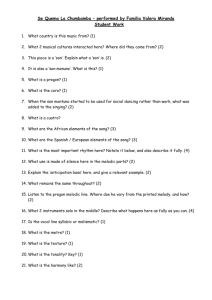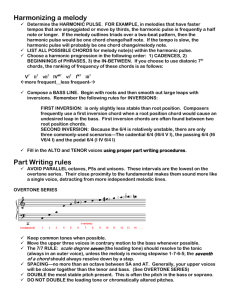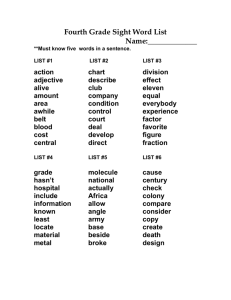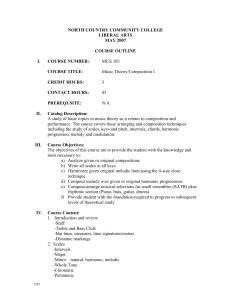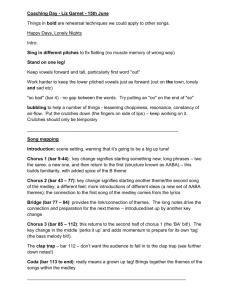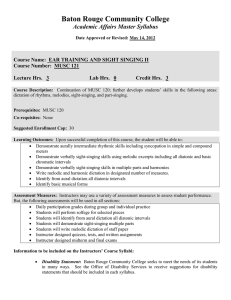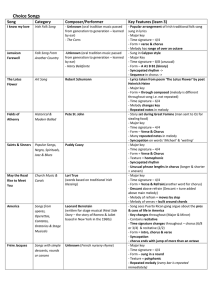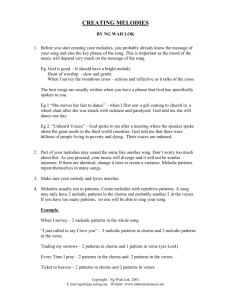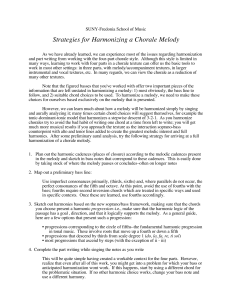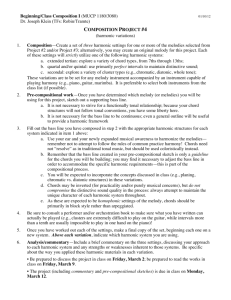MUSC 140
advertisement
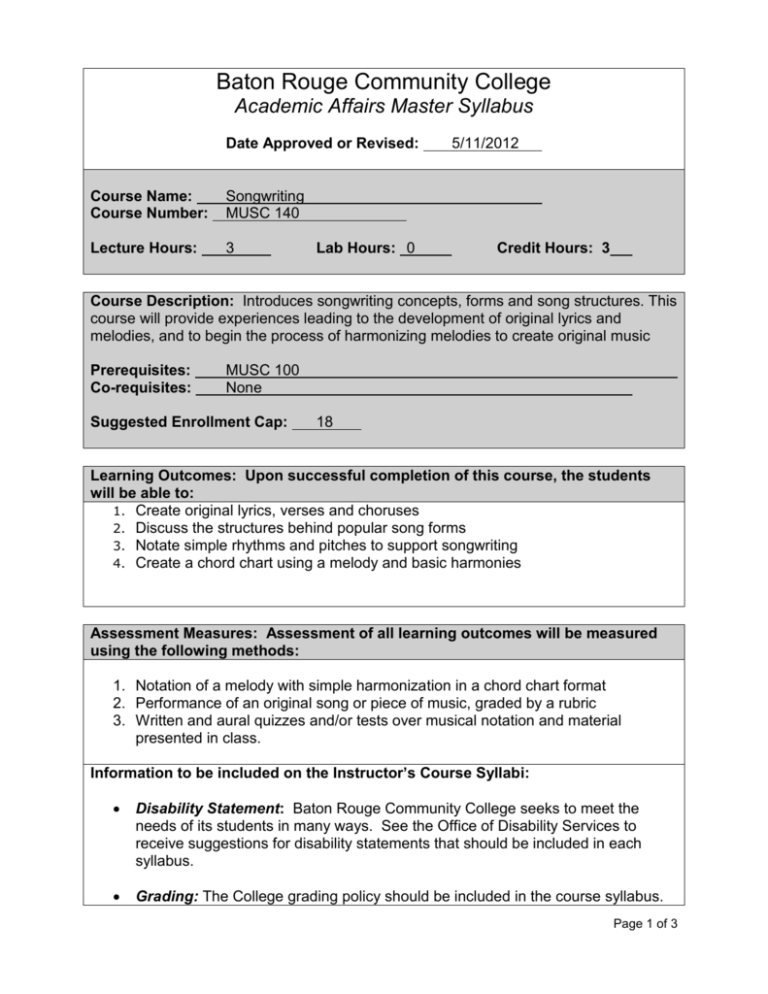
Baton Rouge Community College Academic Affairs Master Syllabus Date Approved or Revised: Course Name: Course Number: Songwriting MUSC 140 Lecture Hours: 3 Lab Hours: 0 5/11/2012 Credit Hours: 3 Course Description: Introduces songwriting concepts, forms and song structures. This course will provide experiences leading to the development of original lyrics and melodies, and to begin the process of harmonizing melodies to create original music Prerequisites: Co-requisites: MUSC 100 None Suggested Enrollment Cap: 18 Learning Outcomes: Upon successful completion of this course, the students will be able to: 1. Create original lyrics, verses and choruses 2. Discuss the structures behind popular song forms 3. Notate simple rhythms and pitches to support songwriting 4. Create a chord chart using a melody and basic harmonies Assessment Measures: Assessment of all learning outcomes will be measured using the following methods: 1. Notation of a melody with simple harmonization in a chord chart format 2. Performance of an original song or piece of music, graded by a rubric 3. Written and aural quizzes and/or tests over musical notation and material presented in class. Information to be included on the Instructor’s Course Syllabi: Disability Statement: Baton Rouge Community College seeks to meet the needs of its students in many ways. See the Office of Disability Services to receive suggestions for disability statements that should be included in each syllabus. Grading: The College grading policy should be included in the course syllabus. Page 1 of 3 Any special practices should also go here. This should include the instructor’s and/or the department’s policy for make-up work. For example in a speech course, “Speeches not given on due date will receive no grade higher than a sixty” or “Make-up work will not be accepted after the last day of class.” Attendance Policy: Include the overall attendance policy of the college. Instructors may want to add additional information in individual syllabi to meet the needs of their courses. General Policies: Instructors’ policy on the use of things such as beepers and cell phones and/or hand held programmable calculators should be covered in this section. Cheating and Plagiarism: This must be included in all syllabi and should include the penalties for incidents in a given class. Students should have a clear idea of what constitutes cheating in a given course. Safety Concerns: In some programs this may be a major issue. For example, “No student will be allowed in the safety lab without safety glasses.” General statements such as, “Items that may be harmful to one’s self or others should not be brought to class.” Library/ Learning Resources: Since the development of the total person is part of our mission, assignments in the library and/or the Learning Resources Center should be included to assist students in enhancing skills and in using resources. Students should be encouraged to use the library for reading enjoyment as part of lifelong learning. Expanded Course Outline: I. Standard Notation A. B. C. D. Notating simple rhythms Notating simple harmonies Review of musical vocabulary and terms Notating phrasing, repeats, codas II. Writing a Melody A. B. C. D. E. Natural phrasing, length Arch and Range Motifs, hooks and ideas Melodic Themes Melodic Development III. Writing a Chorus Page 2 of 3 A. B. C. D. E. Choosing a Key Color, Tempo, Rhythmic Motive, Style Standard Harmonic Phrase Length Harmonic Ideas for the Chorus Cadences, turnarounds Title Placement IV. Writing a Verse A. B. C. D. Lyric Content Standard Lyric Forms: Standard AABA Song Form Creating Verse Ideas (Harmonic/Melodic) Contrasting the Verse and the Chorus V. Building a Bridge A. B. C. D. Harmonic Movement in the Moving Bridge Repetition Placing of the Sections Placing the Bridge VI. Harmonizing a Melody A. B. C. D. Major/minor tonalities Basic chord progressions Using the V7 Voiceleading Page 3 of 3
